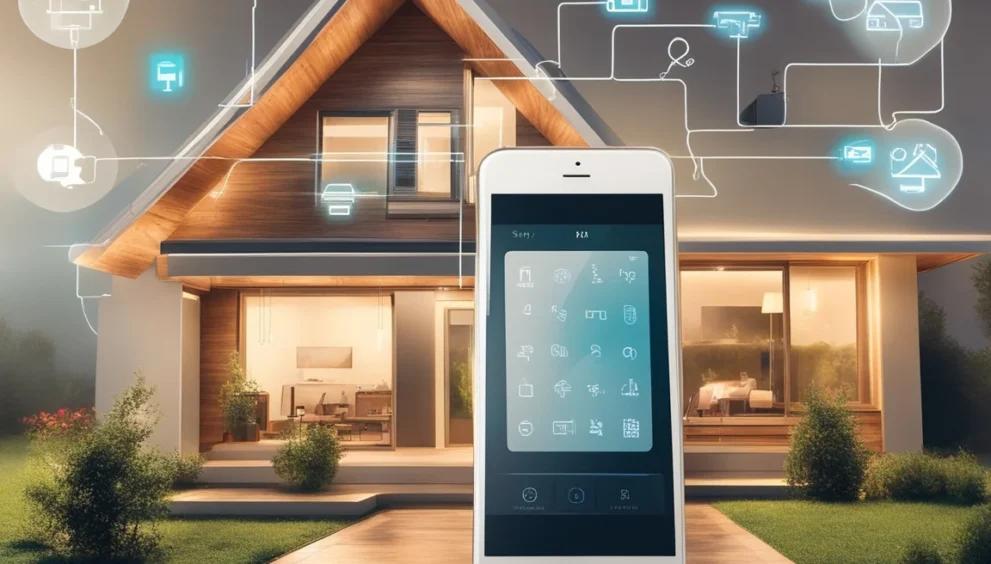DIY Smart Home Automation Tips for the Cost-Conscious

Last winter, Jenny, a young professional living in a small apartment, was struggling to manage her energy bills. She worked long hours and often forgot to switch off the heater and lights. After investing just $150 in smart home automation devices, a smart plug, a Google Home automation hub, and smart light switches, she noticed her electricity bills dropped by nearly 25% within two months. More importantly, she could control everything from her phone, even while at work.
Stories like Jenny’s show us that home automation is no longer a luxury for the wealthy. In 2025, anyone, whether a student, family, or homeowner, can build a smart home on a budget using affordable tools, DIY solutions, and even domestic home automation systems.
The Evolution of Home Automation:
In the past, smart homes were associated with expensive Savant home automation systems and high-end luxury builds. Today, thanks to advances in IT and wireless technology, smart home automation solutions are affordable and available in plug-and-play kits. The rise of standards like Matter means devices from different brands can now work together seamlessly. This democratization of technology has transformed the market, making home automation devices accessible to more people worldwide.
Why Automate? Benefits beyond Convenience:
A smart home automation system design does much more than turn lights on and off.
Key benefits:
- Security → Using CCTV, home automation, smart locks, and sensors.
- Energy savings → Smart plugs, home automation light switches, and thermostats.
- Accessibility → Voice-activated assistants for elderly or disabled family members.
- Lifestyle personalization → Create “morning” or “movie night” routines.
- Cost efficiency → reducing utility bills with energy monitoring devices.
Affordable Home Automation Strategies:
Many assume a home automation system costs thousands of dollars. You can start small and scale up.
Budget-friendly tips:
- Start with home automation switches or smart bulbs.
- Repurpose existing devices with smart plugs.
- Use Google Home automation or Alexa to control devices.
- Buy devices with no monthly subscriptions.
- Explore DIY domestic home automation platforms (e.g., Home Assistant).
- You don’t need to automate everything at once. Begin with one room, one function, or one device.
Smart Home Devices: Categories & Recommendations:
When planning your home automation design, divide devices by function:
- Lighting Automation.
- Smart bulbs & dimmers.
- Home automation light switches for retrofits.
- Security & Safety.
- CCTV home automation cameras.
- Motion & door/window sensors.
- Smart locks.
- Comfort & Energy.
- Smart thermostats.
- HVAC automation.
- Energy-monitoring plugs.
- Entertainment & Lifestyle.
- Smart speakers (Google, Alexa, Siri).
- Streaming & TV automation.
- Wellness & Accessibility.
- Smart wearable integrated with smart home automation devices.
- Voice assistants for elderly support.
Pro tip: Look for Savant home automation or other premium brands if you want full-system luxury, but for most users, budget-friendly hubs + modular devices are enough.
Technical Foundations of Home Automation:
Before buying devices, understand the backbone of your smart system:
- Protocols → Zigbee vs Z-Wave vs Matter.
- Wi-Fi optimization → Mesh routers help avoid “dead zones.”
- IT hubs vs hub-less systems → Decide whether you want a central hub or just an app-based system. Cloud vs local control → Local systems = better privacy; cloud = more convenience.
DIY Automation Projects:
If you’re into DIY, building your own home automation system design can save money and give more control.
Examples:
- Use ESP8266 boards for DIY light control.
- Automate your garden watering system with soil moisture sensors.
- Create motion-activated hallway lights.
- DIY projects blend affordability + customization, making them perfect for tech-savvy homeowners.
Privacy, Security & Ethics:
For renters → Use portable smart plugs and wireless sensors (no drilling).
- Smart homes raise questions: who controls the data?
- Always secure devices with encryption.
- Use guest Wi-Fi for visitors.
- Avoid devices with unnecessary subscriptions.
- Ensure your CCTV is secured with strong passwords.
- Poor home automation system design can create vulnerabilities — so privacy must be part of your setup from day one.
Special Use Cases & Regional Insights:
- For seniors → Voice-controlled assistants, fall-detection sensors, wearable health integration.
- For regions with power outages → Solar-powered devices + UPS backups.
- For property value → Adding domestic home automation can increase resale value.
Cost & ROI of Smart Homes:
So, how much does a home automation system cost in 2025?
- Starter kits: $100–$300.
- Mid-range (lighting + security): $500–$1,000.
- Full-house setups: $3,000–$10,000 (premium systems like Savant home automation).
- ROI: Smart homes can save up to 30% on energy bills and increase home value by 5–10%.
Troubleshooting & Maintenance:
- Update firmware regularly.
- Reset devices when they lose connection.
- Keep a backup power solution for critical systems.
- Replace aging home automation devices every 3–5 years.
Future of Home Automation:
Looking ahead:
- AI-driven automation will anticipate routines.
- Integration of wearable health tech with home systems.
- Sustainable automation powered by solar and renewable energy.
- More domestic home automation adoption in emerging markets.
FAQs:
What’s the cheapest way to start?
Smart plugs or smart bulbs.
Is Google Home automation better than Alexa?
Depends on ecosystem preference.
Is Matter protocol worth it?
Yes, for cross-brand compatibility.
How secure is CCTV home automation?
Secure if encrypted + password protected.
What’s the average home automation system cost?
Starts at $100, goes up to $10,000 depending on scope.
Conclusion:
Home automation is no longer a luxury. It’s a lifestyle upgrade available to anyone. Whether you’re installing home automation light switches, building a DIY system, or investing in Savant home automation, the key is to start small, scale gradually, and prioritize security.





























































































































